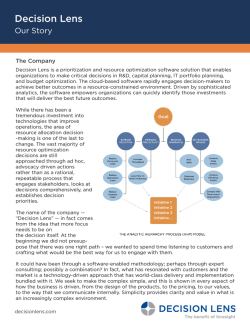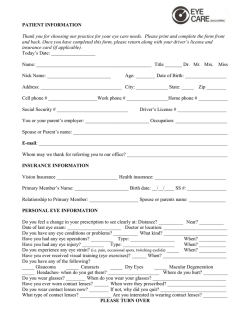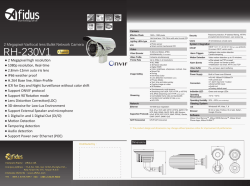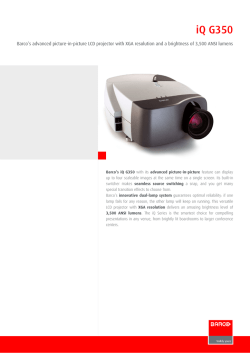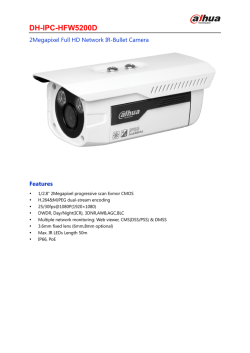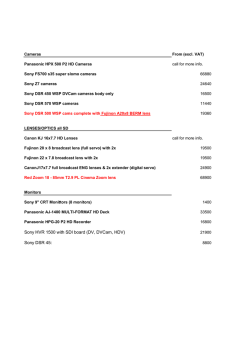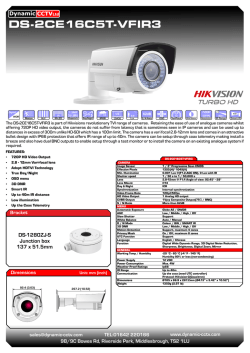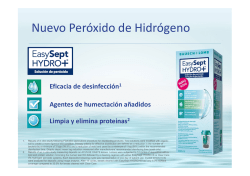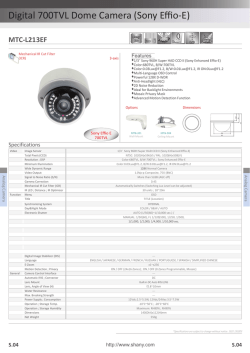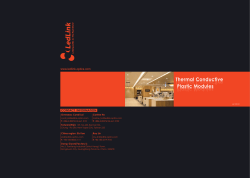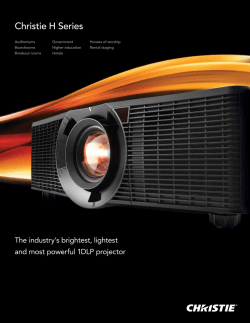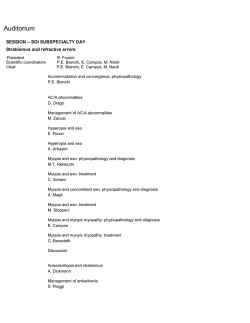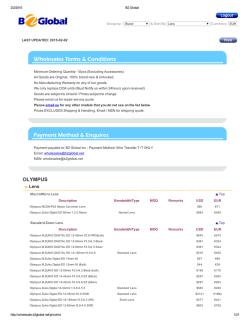
Clinical Performance of Extreme Range Contact Lenses for High
Clinical Performance of Extreme Range Contact Lenses for High Refractive Errors Cheryl McKinnon, OD, PhD, FAAO, Paul Chamberlain, BSc (Hons), Wenjuan Feng, MS CooperVision, Inc., Pleasanton, CA Results To compare the clinical performance of cast-molded, Biofinity® XR (XR) (CooperVision®) silicone hydrogel lens (SH) with subjects’ habitual contact lens corrections. All subjects were fitted in the CooperVision Biofinity® XR lenses. Methods and Materials • • • • This was a two-week, open label, daily wear, dispensing study conducted at four (4) investigational sites. 19 single-vision contact lens wearers with lens powers >-12D or > +8 with 20/50 or better in at least one eye were recruited. Subjects were examined at the baseline visit and again after two weeks. High (HC) and low contrast (LC) logMAR visual acuity, lens fit and subjective ratings (0-100) were measured with habitual lenses. Ocular health was also assessed. Following an over-refraction, an XR lens was fitted and lens power confirmed. Subjects were then dispensed lenses . At the two-week visit, vision, lens fit, subjective ratings and ocular health were repeated. logMAR * * HC VA Lens Fit Response Performance Acuvue 1-D Moist Acuvue Oasys (SH) Biofinity (SH) TruEye (SH) Precision UV Hydrosoft options Exception (H) O2 Optix custom (SH) 2-wk follow-up 50% 40% 30% 20% 10% 0% 5% slightly decentered extremely decentered Habitual Material Water Content (%) Dk/t (-3.00) Modulus (MPa) BC/Diameter Design Power Range (D) Comfilcon A 48 128 0.75 8.6/14.0 Asphere front surface +15.00 to -20.00 Biof XR *p=0.01 1.2 0.8 0.6 Figure 1: Distribution of subjects’ habitual lenses 0.4 * 0.2 Visual Acuity • The HC and LC logMAR visual acuity were significantly better with the XR lenses compared to subject’s habitual visual acuity (p<0.04) (Figure 2). Comfort end of day Comfort overall Dryness Dryness Overall end of day satisfaction Figure 5: Subjective comfort, dryness and satisfaction ratings *p=0.01 Habitual XR 2 week * 0 Red Bulbar Red Limbal Corn Corn Ext StainType Conj Stain Conj Indent Figure 4: Mean anterior ocular responses Palp red Haziness Vision qual day Vision qual night Ease of handling Ease of removal Figure 6: Subjective vision and handling ratings 1 Table 1: Contact lens parameters * Conclusions Figure 3: Lens centration 48% * Ghosting optimum 12% Dispensing 60% C-Vue Adv hydrogel (SH) 5% Habitual *p≤0.03 XR 2 week * Comfort 100 90 80 70 60 50 40 30 20 10 0 70% 5% 5% Physiological • Anterior ocular responses were graded low (mean grade 1.0) (Figure 4). Proclear 5% and Habitual 100 90 80 70 60 50 40 30 20 10 0 • The fitting characteristics of the XR lens, including centration, movement and fit acceptance were as good as or better than habitual lenses (Figure 3). • A high proportion of subjects were successfully fitted with one trial lens pair (79%) using best sphere 80% over correction and trial fitting set. 5% LC VA • There was no relationship between VA or vision quality and the change in over-refraction (R²=14-16%). Trial fitting success 5% *p=0.04 Figure 2: High and low contrast VA • Hydrogels accounted for 68% and SH for 32% of subjects’ habitual lenses. • Proclear (48%) was the most common lens followed by Acuvue 1-D Moist (12%) (Figure 1). • 5 out of 19 subjects (26%) were undercorrected at screening (mean 0.70D) due to limited power ranges in their non-custom habitual lenses. 5% Biofinity XR (0-4) • 0.36 0.32 0.28 0.24 0.2 0.16 0.12 0.08 0.04 0 10/9 43 ± 17 21-73 13 -13.6D ± 1.42D (-12.50 to -17.00D) 6 +9.25 ± 0.52D (+8.50 to +10.00D) (0-100) Purpose Habitual Table 2: Summary of Biometric Data Gender: female/male Age (Mean ± SD) Age range No of Myopes Mean ± SD (Range) No. of Hyperopes Mean ± SD (Range) Subjective Ratings • Comfort, overall satisfaction and handling were rated as excellent and similar to Habitual lenses. • Significantly less dryness symptoms reported with XR compared with Habitual lens. • The XR lenses showed significantly higher ratings at end of day for comfort and vision quality (Figures 5 & 6). • XR preferred over habitual for overall performance, although not significant (63% vs 21%, p=0.10). (0-100) The expectations for successful contact lens wear in patients with high refractive errors should be the same as those for ‘normal’ refractive errors, i.e. excellent comfort, vision and ocular health. However, the challenges to achieve these are greater because of the geometries inherent in lens designs for these prescriptions. Complaints of unstable lens fit, undercorrected VA, poor comfort and hypoxia concerns are commonplace in this refractive error range. These patients also face limited lens choices, particularly in silicone hydrogel materials. Results (cont’d) (0-100) Introduction Papillae •This study demonstrated an improved performance on a number of objective and subjective assessments and successful transition when re-fitted with the Biofinity XR lenses. •The expanded parameter range of spherical lenses (+8.50 to +15.00D and -12.50 to -20.00D) offers practitioners the opportunity to meet the needs and challenges of patients with high refractive errors. •XR lenses provide the benefits of an advanced design in a high oxygen permeable cast molded SH material. Acknowledgements Study conducted at CRC-UCB (Berkeley), CCLR (Waterloo), CORL (IU) and TERTC (Houston). Supported by CooperVision, Inc.
© Copyright 2024
